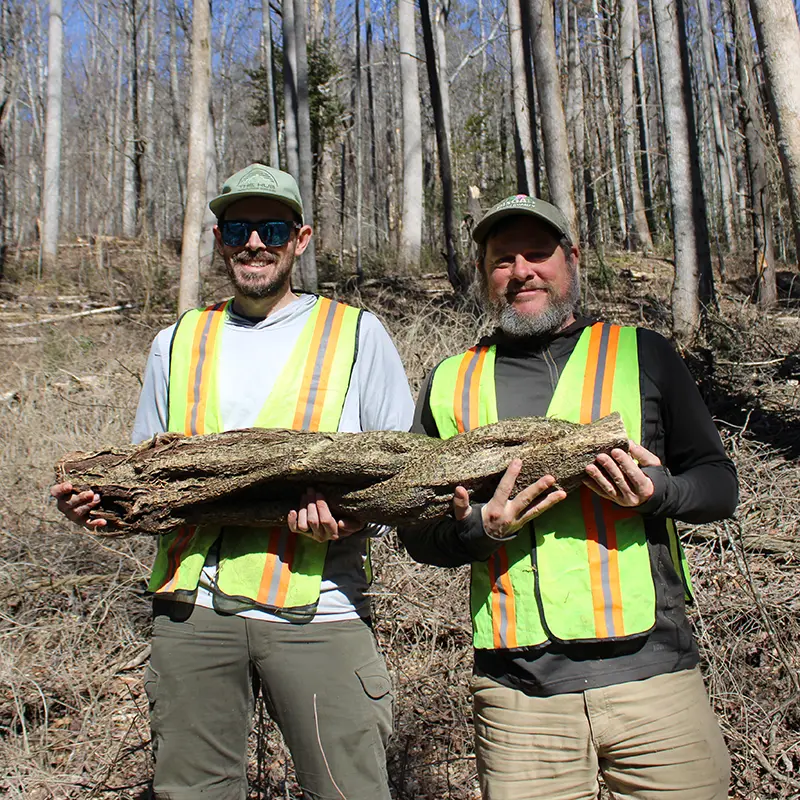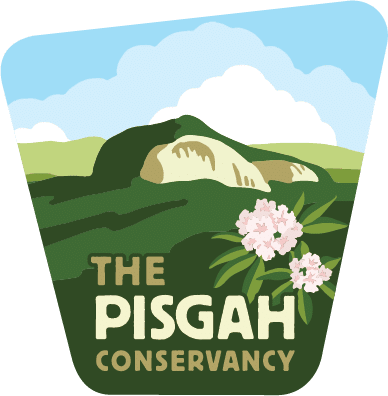Last week our Invasive Plant Management Crew celebrated one year of tackling non-native invasive species in the forest. The crew is the first and only of its kind fully dedicated to working in the Pisgah Ranger District.
In its pilot year, two crew leads and one seasonal crew member successfully treated more than 120 acres and surveyed an additional 330 acres across the forest.
The crew’s major projects in year one included:
- Invasive Plant Removal in North Mills River Recreational Area
- Invasive Plant Removal at Kuykendall Group Campground
- Autumn Olive Removal Along Avery Creek Road
- Kudzu Removal in Davidson River Corridor

“It’s not everyday and everywhere you find one of the most biologically diverse and geologically unique places in the country right in your backyard. This natural resource is not only great to explore, it is doing the heavy lifting of filtering our water, sequestering carbon and pollutants, and mitigating storm damage.” Will Coffee, Invasive Plant Management Crew Leader
Why is it important to manage invasive plants in the forest?
Pisgah is among the most biodiverse and most visited national forests in the United States and boasts globally unique ecological hotspots. These biodiverse areas – ranging from mountain bogs and heath balds to temperate rainforests – support rare plants and animals.
Unfortunately, invasive plant infestations have developed acres of monocultures in Pisgah’s forested understories, along riparian zones, and into forest canopies.
Problem species include, but are not limited to:
- Oriental Bittersweet
- Multiflora Rose
- Chinese Privet
- Autumn Olive
- Kudzu
- Japanese Honeysuckle
- Mugwort
- Lespedeza
- Japanese Stilt Grass
Unmitigated, invasive plants negatively affect soil and water quality, hydrologic function and geochemistry of streams and river systems, and overall watershed health.
They crowd out native plant populations leading to a series of declines in dependent species of insects, birds, and many aquatic organisms.
What’s happening in year two?
The crew is moving forward into different phases of management in 2025. They will combat reemergent invasive plant seedbanks and resprouts while allowing native plants to re-colonize and naturally move back into the management area. They will also expand their geographic footprint to cover more of the forest. Their work will increase habitat quality for wildlife and other foodwebs, and help safeguard and improve water quality and visitor experiences.
Areas the crew will survey and treat in 2025:
- Catheys Creek Watershed
- Kuykendall Group Camp
- Davidson River Watershed
- North Mills River Campground
- Wash Creek Horse Camp
- Pink Beds
- Foster Creek Bog
- Doublehead Knob
The Pisgah Conservancy’s Invasive Plant Management Crew is a partnership program with the U.S. Forest Service that receives support from the Community Foundation of Western North Carolina, Naventure, and donors to The Pisgah Conservancy.
